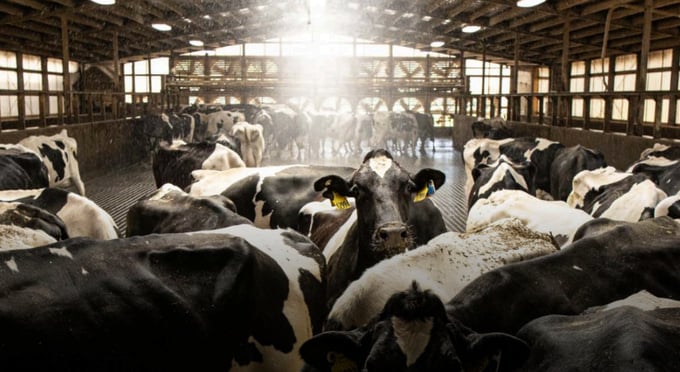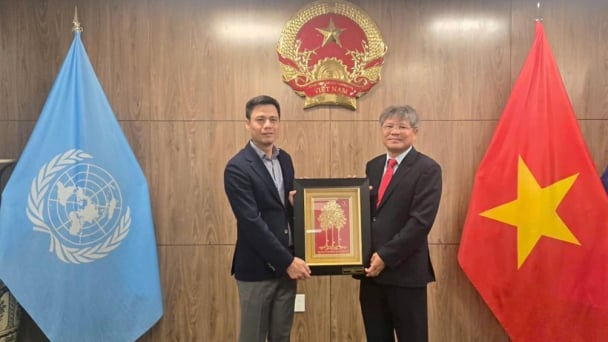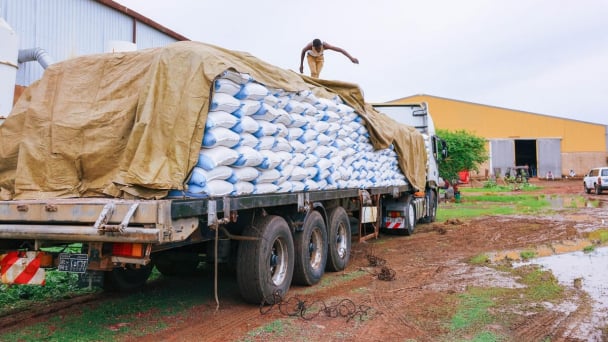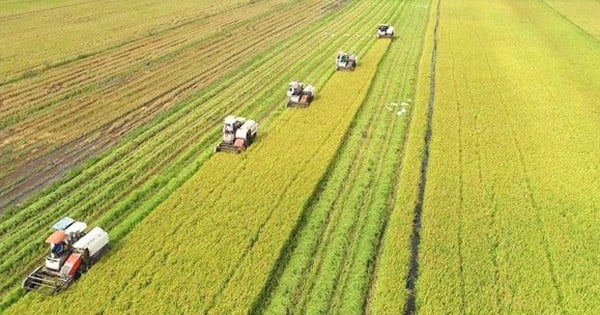May 22, 2025 | 16:50 GMT +7
May 22, 2025 | 16:50 GMT +7
Hotline: 0913.378.918
May 22, 2025 | 16:50 GMT +7
Hotline: 0913.378.918
On April 19, a workshop on "Cow breed genetics in Vietnam" was held to discuss worldwide experiences and apply technology to domestic dairy cow breed genetics.
Mr. Pham Kim Dang, Deputy Director of the Department of Livestock Production (MARD), said that Vietnamese animal husbandry has steadily improved in terms of production capacity and strong integration with the area and the globe.

Mr. Pham Kim Dang, Deputy Director of the Department of Livestock Production (right): Vietnam is in the Top 2 strong global brands of the dairy industry. Photo: PT.
In 2023, despite challenges from the global economy, political conflicts in some areas, decreased consumer demand, complicated disease outbreaks, and climate change, the livestock industry as a whole produced approximately 7.6 million tons of meat, nearly 19 billion eggs, and 1.2 million tons of milk.
Dairy farming has a history of expansion with other animal industries, although milk production growth in Vietnam has continuously been in the double digits. Vietnam's dairy enterprises are recognized among the top five most sustainable milk brands in the world, the top ten most valuable milk brands, and the top two strongest global milk brands.
Although Vietnam's dairy sector has grown to 11th in Asia for milk output and 5th in milk productivity per cow, local supply still falls short of demand. Every year, Vietnam imports a huge quantity of milk and dairy products to fulfill local demand. In 2023, the government spent almost 1.2 billion USD on milk and milk product imports.
"Currently, the average consumption of milk and milk products per capita in Vietnam is around 27kg/person/year. This consumption level is expected to rise to 40kg/person/year by 2030. This implies that Vietnam's dairy farming business has great prospects for future growth," said Mr. Pham Kim Dang.
According to the Livestock Department's findings, despite some successes, the dairy farming business continues to encounter obstacles and challenges, such as a shortage of grazing space, natural grazing sites, and restricted acreage for producing animal feed.
Furthermore, Vietnam's free trade agreements with other nations, as well as its 0% import duty on milk imports, have placed Vietnamese dairy firms in direct rivalry with one another. Furthermore, the goal to decrease greenhouse gas emissions to zero by 2050, as outlined in the agreed roadmap at COP26, necessitates the livestock business developing innovative solutions in animal husbandry," observed the Deputy Director of the Livestock Department on the problems.
As a result, livestock industry officials think that upgrading dairy cow breeds and boosting productivity are critical for the Vietnamese dairy business to remain competitive.
Ms. Gwen Powers, Senior Director of Technical Services at GENEX, emphasized the relevance of genetic technology in dairy cow farming, stating that in the United States, the livestock business seeks dairy cattle with greater productivity, and researchers concentrate on herd statistics. Farms have more data than ever before. A single dairy cow may provide more than 2 billion data points during its lifetime.
According to Ms. Gwen Powers, the variety of genetic features in the livestock population has enabled the selection of the best cattle for diverse conditions and uses. Genetic assessments based on DNA markers and phenotypes may help forecast an animal's genetic worth.

The average milk consumption of Vietnamese people is forecast to increase to 40kg/person/year by 2030. Photo: PT.
Since 1960, the average annual milk output of Holsteins in the United States has climbed from around 5,900 kg to 12,700 kg per cow. As a result, scientists anticipate that genetic technology will play an important role in dairy cow breeding.
The "GENEX Dairy Bull Search" tool, which was unveiled by the business during the conference, may be used based on US studies of genetic variation for 50 significant dairy cow qualities.
Furthermore, the technology aids in identifying economically significant qualities while highlighting traits that need improvement, allowing producers to weigh the advantages of breeding, cut feeding costs, and limit genetic problems.
Choices focused purely on productivity will limit reproductive potential. In contrast, making balanced decisions to enhance features helps to increase economic worth.
The US dairy sector now produces four times more milk than in 1945 and twice as much as in 1970. Based on the success of the US dairy business, Mr. Israel Handy, Director of GENEX, discussed his dairy cow farming experiences from US farms.
Mr. Israel Handy's experiences at the seminar are stage-specific: during the newborn calf stage, breeders focus on immunizations, excellent colostrum, and keeping calf quarters clean. It is critical to keep postpartum cows in clean enclosures and watch them closely.
During the drying-off stage, care is taken to provide a correct nutritional diet. During the weaning period, ongoing vaccine supplements and improved diet are required. In terms of breeding, Mr. Israel Handy promotes the use of pedigree charts and breeding programs.
Translated by Linh Linh
![Reducing emissions from rice fields: [3] New values generated from carbon credit](https://t.ex-cdn.com/nongnghiepmoitruong.vn/608w/files/content/2025/05/19/dsc09613-144700_71-150957.jpg)
(VAN) In addition to helping safeguard the environment, the low-emission rice cultivation model also generates new opportunities for farmers by leveraging the carbon credit market.
![Ho Chi Minh city adapts to climate change: [1] Vulnerable in the whirlwind of development](https://t.ex-cdn.com/nongnghiepmoitruong.vn/608w/files/duyenht92/2025/05/19/3131-ngap-nongnghiep-163121.jpg)
(VAN) As the country's economic engine with a rapid urbanization rate, Ho Chi Minh city is facing increasingly serious consequences of climate change.

(VAN) On May 21, Minister of Agriculture and Environment Do Duc Duy worked with Mr. Olivier Brochet, Ambassador Extraordinary and Plenipotentiary of the French Republic to Vietnam.

(VAN) VRG recently conducted a visit and working trip to the United States to demonstrate its efforts in redefining the role of rubber enterprises in the global value chain.

(VAN) In 2024, over 295 million people across 53 countries and territories faced acute hunger—an increase of almost 14 million people compared to 2023, while the number of people facing catastrophic levels of hunger reached a record high.

(VAN) World Environment Day 2025 (June 5) carries the theme 'Beat Plastic Pollution' continuing to emphasize the global urgency of addressing the plastic waste crisis.

(VAN) This was the assessment shared by experts at the workshop titled 'Assessing the Role and Potential of Low-Emission Rice Production Systems in Vietnam,' held on the morning of May 19.